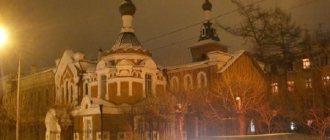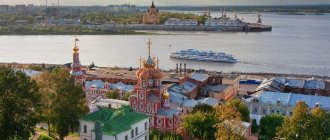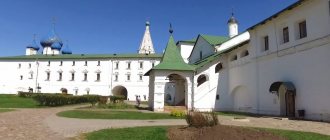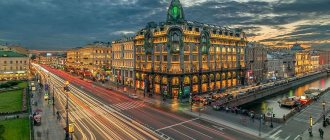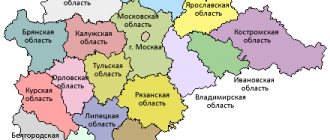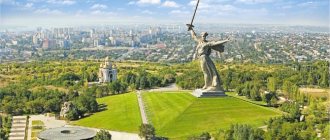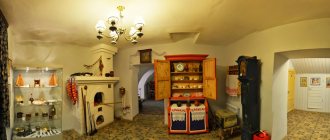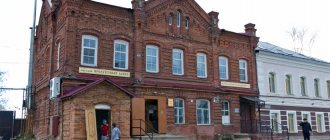YEAR OF CREATION
The Yaroslavl region was formed on March 11, 1936 as a result of the division of the Ivanovo industrial region into the Ivanovo and Yaroslavl regions.
The administrative center is the city of Yaroslavl, founded in 1010 by Prince Yaroslav the Wise.
TERRITORY
The region's territory occupies 36.4 thousand square meters. km. The length from north to south is 270 km, from west to east – 220 km.
POPULATION
Population: 1.241 million people. Population density is 34.3 people per 1 km². The number of men/women is 45/55%. 81.5% of the population lives in cities. 601 thousand people live in Yaroslavl.
GEOGRAPHICAL POSITION
The Yaroslavl region is located in the northern half of the European part of Russia, bordering on the Moscow, Vladimir, Vologda, Kostroma, Ivanovo and Tver regions.
Yaroslavl is a large, rapidly developing administrative and business center in the northeast of Moscow.
The distance from Yaroslavl • to Moscow is 282 km • to St. Petersburg – 850 km • to Nizhny Novgorod – 330 km.
CLIMATE
The region is located in the temperate continental climate zone. The average long-term air temperature in January is 11°C, in July +18°C. The average annual precipitation is about 600 mm. The average duration of the growing season is 165-170 days.
NATURAL RESOURCES
The territory of the region is crossed by rivers with a total length of 20 thousand km. The area of the lakes is about 5 thousand square meters. km. In total, there are more than 80 lakes in the Yaroslavl region, the largest of which are Lake Nero and Lake Pleshcheyevo. On the Volga River, which has a length of 340 km in the region, there are 2 reservoirs: Uglich and Rybinsk - the largest in Central Russia. The total reserves of surface water are 38 cubic meters. km.
The total forest area is 1.834 million hectares. The forest cover of the region is 45.7%. Primary and secondary timber processing is carried out in the region. The total timber reserve is 281.3 million m³.
The main natural resources of the Yaroslavl region are peat, sand and gravel materials, construction sand and sapropel. The region's mineral resource base was formed over 70 years, from the twenties to the eighties of the twentieth century. As a result of geological exploration work in the region, 1,169 deposits of various minerals were identified, including 1,044 deposits of peat and sapropel.
The subsoil of the Yaroslavl region has the geological prerequisites for identifying unconventional minerals: refractory and bentonite clays, titanium-zirconium sands, glauconites, vivianites, uranium, gold and hydrocarbons.
There are 11 types of minerals distributed in the region, classified as common. A significant part in the structure of reserves is occupied by sand and gravel material and construction sand.
What holiday is it today?
January 22, 2022, Saturday
Today are holidays, events: Day of Unification of Ukraine Tomorrow: Premiere of the opera “Eugene Onegin” at the Bolshoi Theater
Today is the Orthodox holiday: Martyr Polyeuctus. St. Philip, Metropolitan of Moscow and All Russia, wonderworker... Tomorrow: St. Gregory, Bishop of Nyssa. Venerable Markian the presbyter. Venerable Dometian, Bishop of Melitino. St. Paul of Komel, wonderworker, student of St. Sergius of Radonezh. Saint Theophan, the Recluse of Vyshensky...
Today is a national holiday: St. Philip's Day... Tomorrow: Gregory - Summer Guide...
Seasons
Seasons, four periods of the year (spring, summer, autumn and winter) characterized by certain average temperatures. The period during which the Sun passes through one of these sectors is called the season. Spring in the Northern Hemisphere and autumn in the Southern Hemisphere begin when the Sun passes through the initial circle of declination and its right ascension is 0° (vernal equinox). Summer in the Northern Hemisphere and winter in the Southern Hemisphere occur when the sun's right ascension is 90° (summer solstice). Autumn in the Northern Hemisphere and spring in the Southern Hemisphere begin when the sun's right ascension is 180° (autumnal equinox). The beginning of winter in the Northern Hemisphere and summer in the Southern Hemisphere is considered to be the winter solstice, when the direct ascension of the Sun is 270°... Next: Seasons. Russian folk calendar. Monthly words...
Rostov the Great.
Rostov the Great is the living soul of the Yaroslavl Land!
Not far from Lake Nero is the famous white stone Rostov Kremlin . This ancient Russian princely fortress is surrounded by powerful walls with towers. Historically, this was the Bishop's Court - the residence of the Rostov metropolitans and bishops. Metropolitan Jonah Sysoevich was especially famous.
Under him, the Assumption Cathedral was renovated and a magnificent belfry of 13 bells was built. The largest of them was named “Sysoy”.
Rostov the Great is the most famous center of bell ringing! Tourists often hear the music of church bells!
The churches of the Rostov Kremlin impress with their frescoes. The fresco paintings of the churches “John the Evangelist”, “Resurrection” and “Savior in the Entrance” have no analogues in the world.
The Rostov Kremlin wins the hearts of its guests with the Museum of Church Antiquities and Enamel. Scenes for the famous film “Ivan Vasilyevich Changes His Profession” were filmed in the ancient Rostov Kremlin.
Rostov the Great surprises tourists: the Spaso-Yakovlevsky and Abrahamtsevo monasteries, the fabulous Lake Nero, the Nativity Convent, the Church of Isidore the Blessed on the Ramparts.
Varnitsky Holy Trinity Sergius Monastery (15th century) - the birthplace of Sergius of Radonezh. In the 20-30s of the 20th century, the monastery was practically wiped off the face of the earth. At the end of the 20th century, with the return of it to the Russian Orthodox Church, it was rebuilt, restored and is now more beautiful than it was before.
Leaving Rostov the Great and its famous Kremlin, this pearl of Russian art, visitors take with them a feeling of admiration for the talent of the remarkable craftsmen from among the people and gratitude to the city residents for the loving preservation of priceless monuments of history and material culture.
Folk calendar about every day
Every day one season always replaces another and this determines a person’s way of life. In connection with this, a folk calendar was formed in which there were practically no nameless, unmarked days. Every day was special, had its own purpose. All this was determined by climate conditions and astrological phenomena.
A calendar is a system for counting periods of time. The first calendars arose a long time ago, in ancient times, because there was a need to measure time. The word calendar comes from the Latin words caleo - to proclaim and calendarium - debt book. This is due to the fact that in Ancient Rome the beginning of each month was especially proclaimed, and because it was customary to pay debts on the first day of the month. Different peoples counted time differently. Some calendars are based on the changing phases of the moon - lunar calendars; in others - the change of seasons - sunny; in others, the length of the year was coordinated with the change of seasons, and the counting of months was associated with the phases of the Moon. Such calendars are called lunisolar.
In Rus', the calendar was called a monthly calendar. Every day, the month book covered the entire year of peasant life, “describing” day by day, month after month, where each day had its own holidays or weekdays, customs and superstitions, traditions and rituals, natural signs and phenomena. The cyclical nature of the calendar is reminiscent of human life, where spring is youth, summer is heyday, autumn is the time of harvesting fruits (it’s good if there are some, otherwise you can live your life without collecting fruits), winter is the time of wisdom and peace. This cyclicality and rhythm determined the way of life of the farmer. The folk calendar was an agricultural calendar, which was reflected in the names of the months, folk signs, rituals and customs. Even the determination of the timing and duration of the seasons is associated with real climatic conditions. Hence the discrepancy between the names of the months in different areas... Next: Folk calendar...
About the climate
The climate in the region is moderate, with clearly defined features characteristic of each season. The beginning of autumn is especially attractive. As a rule, until mid-October there are dry and warm days, which are replaced by prolonged drizzling rains.
There are no severe frosts in the region in winter, as well as severe heat in the summer. This is due to the high humidity of the climate, because the level of evaporation here is not very low, since the area of the Yaroslavl region is literally covered with various bodies of water.
As for temperature indicators, in July the thermometer stays at +18 degrees Celsius, and in January it rarely drops below -12.
Fishing calendar for every day
The fishing calendar should not be taken as an absolutely indisputable truth. Fish biting is greatly influenced by a whole range of natural factors, as well as the influence on the nature of man himself. You must not forget that the fish’s bite depends and is determined not only by the calendar dates and biological cycles of their life, reflected in the calendar, but also, no less, by the state of their habitat; the bite also depends on weather conditions: air and water temperatures, cloudiness, wind direction and strength, etc... Next: Fishing calendar...
Sights of the city of Myshkin:
Myshkin is a member of the Association of Small Tourist Towns of the Volga Region . In 2011, it received more than 160 thousand tourists, and in 2008 there were only 10 thousand. The growth is huge! Now there are 30 objects in the city for display to tourists.
Myshkin is a town of amazing museums! You won’t find such fun museums anywhere else:
- The famous, only “Mouse Museum” ;
- Tourist complex "Myshkiny Palata";
- Museum "Russian Valenki";
- Museums of the capital of pilots and equipment;
- An exhibition of wooden architecture and the oldest “House of Crafts” with a working pottery workshop and forge.
- Mill and miller's house;
- Ethnographic exhibition "Len";
- Historical and Household Museum;
- Museum of vodka maker P.A. Smirnov;
- "Boat of Peter I" museum-estate;
- "Bot Fortune". Exposition;
- Museum " Crafts of the Yaroslavl Region " ;
- Museum of Katskars in the village of Martynovo;
- Museum " Merchant's Estate " .
Orthodox calendar about every day
Orthodox calendar: Orthodox, Church and Christian holidays.
The church year is an alternation of weekdays and holidays. On weekdays, a person is called to work “by the sweat of his brow to earn his bread.” Holidays are given in order to feel liberation, to rise above the bustle and routine of the world, to feel involved in the highest of worlds, “where there are no illnesses, sorrows and sighs, but endless life.” Since ancient times, holiday cycles have been associated with the seasons. The pagans associated them with the worship of the forces of nature, the cult of which in the Old Testament was replaced by gratitude to the Creator for the universe. And although the connection between holidays and the seasons has not completely lost its power, since God is present in everything, in the plant and animal world, in human works, it nevertheless faded into the background, giving way to a spiritual foundation built on the Sacred Scriptures. The history of Orthodox holidays dates back to the times of the Old Testament. Each of the Orthodox holidays is dedicated to the remembrance of the most important events in the life of Jesus Christ and the Mother of God, as well as the memory of saints... Next: Orthodox calendar...
YAROSLAVL IS ONE OF THE CULTURAL CENTERS OF RUSSIA
Art critics call Yaroslavl “the Florence of the Russian North” for its vibrant mixture of architectural styles and trends. Tourists from all over the world come here to admire the numerous temples and monasteries - masterpieces of architecture of the 17th century - the “golden age” of Yaroslavl. The churches of Elijah the Prophet and John the Baptist and the Volzhskaya embankment with its magnificent gazebos are considered unique in beauty. The Yaroslavl school of icon painting, monumental painting and tile-making received wide fame and world recognition.
In 2005, the historical center of Yaroslavl was included in the UNESCO World Heritage List. More than a million tourists visit the region every year.
In 2010, Yaroslavl celebrated its 1000th anniversary.
Russian folk calendar for every day
The word “sign” comes from the word “notice”, i.e. observe. As a result of observing what happens around a person every day, he accumulates life experience. This knowledge was passed down from generation to generation, carefully preserved and people trusted it as a sacred book. Many signs have come to us from the depths of centuries without losing their knowledge. Each of us is free to choose: to dismiss all this as an absurd superstition or to take a closer look at the signs and take the centuries-old experience of generations more seriously. Most of us, when taking exams, ask them to scold them, boasting about some kind of good fortune or luck, spit so as not to jinx them or knock on wood, take a detour if a black cat crossed the road, are afraid of the number 13 and much more. And who among us does not have lucky things, numbers? Who has never resorted to the help of fate at least once in their life, who has not believed in secrets? It’s as if everything connected with signs is hidden somewhere deep in our subconscious. Often we remember them mechanically, unconsciously, or just as a joke. But, undoubtedly, the signs contain a lot of accurate knowledge and practical wisdom of our ancestors. They cover all the characteristic, often difficult to perceive, natural phenomena. Signs have preserved a lot of what was in old folk holidays and customs; they help predict the weather, grow crops... Next: Folk signs...
Cities of the Yaroslavl region
Yaroslavl. Population 600 thousand people, regional center. Located along the banks of the Volga, it has a 1000-year history; The city center is beautiful, you can admire the Kremlin, many buildings from the 17th-18th-19th centuries have been preserved. It is located mainly on the right bank of the Volga, connected to the left bank areas by 2 bridges. The M8 federal highway passes along one, capturing part of the city.
Rybinsk. Population 200 thousand people. Located on the Volga, within the city boundaries there is the Rybinsk waterworks, the locks and the dam of the Rybinsk Reservoir. The main attraction is the city cathedral and the city museum building, which look good from the river or the recently renovated embankment. Excellent hunting in the city area, fishing in the reservoir.
Pereslavl-Zalessky, Rostov, Uglich, Tutaev . Population from 42 to 32 thousand people. All cities with a rich history, all once had much greater importance than now, all have many architectural monuments from different centuries (we especially note Rostov and Uglich in this regard). At the same time, any manufacturing industry is almost completely absent; cities exist on subsidies from the regional budget. The tourism industry could be a great help, but alas, they don’t know how to properly preserve and present historical monuments in Rus'... There was once a Golden Ring, and these cities were part of it, but where is it now...
Gavrilov-Yam, Danilov. Population from 17 to 15 thousand people. In principle, the above can be transferred here, only the pipes are lower and the smoke is thinner. In Gavrilov-Yama there is a flax mill that produces wonderful fabrics, and Danilov is a large railway and highway junction. Actually, that's all.
Holiday calendar, dates and events of the year
All state and professional holidays in Russia, including significant World and International holidays, and other equally interesting holidays and events about every day.
The holiday has always kept pace with the history of mankind. Social time can be divided into three types: everyday life (weekdays), weekends and holidays. Everyday life is a series of practices repeated day after day and every day (work). Weekends are regular breaks from the rush of everyday life. It is believed that on weekends a person should restore his strength after working days. Day off, non-working day. A holiday is a day of celebration established in honor or in memory of someone or something. A day or series of days celebrated by the church in memory of a religious event or saint... Next: Calendar...
Uglich.
Uglich is famous for its historical and art museum. 5 monuments of ancient Russian art are open for visits here:
- Temple of “Tsarevich Dimitri on the Blood” (1692), erected on the very spot where the young son of the Russian Tsar Ivan the Terrible died. The theme of the “Uglich Events” at the end of the Time of Troubles on May 15, 1591 is depicted in frescoes on the western wall of the cathedral and is of great artistic value;
- Chambers of the Uglich appanage princes of the 15th century with the original coat of arms of the city of Uglich. There is an exhibition reflecting the Petrine and Medieval periods of the city’s history;
- Epiphany Cathedral;
- Transfiguration Church;
- Gallery of painting and contemporary Orthodox art “Under the Cover of Grace” and exhibition hall, operating since 2007.
Come to the Yaroslavl region, enjoy the silence and splendor of nature, the majestic ensembles of monasteries and take with you a piece of the immense Russian soul!
Articles on the topic of holidays in Russia:
Novgorod region: Veliky Novgorod and attractions of the Novgorod region. Weekend Tours . Gold ring of Russia. Holidays on the Black Sea in Russia: Anapa, Gelendzhik, Sochi.
Prayer book, Orthodox prayers for every day
Prayer is the most powerful means for healing all illnesses - both physical and mental. Prayers can be laudatory or grateful, petitionary and repentant. If we have offended God, sinned, we must ask Him for forgiveness, that is, repent. Such prayers are called repentant prayers. If everything is fine with us, if we and our loved ones are healthy and prosperous, if we have a place to live, something to wear, something to eat, we must glorify and thank God for this. Such prayers are called praise or thanksgiving. If some misfortune, illness, trouble or need happens, you need to ask God for help. Such prayers are called petitionary... Next: Orthodox prayers...
From the history of the region
According to historians and archaeologists, the area of the Yaroslavl region was inhabited during the Late Paleolithic period. This means that sites of ancient people appeared on the territory of the region immediately after the retreat of the glaciers. Those who lived in these lands during the Neolithic were mainly engaged in fishing and hunting. Scientists find tribal sites dating back to this historical period along river banks. In the Bronze Age, tribes of people who were forced out of Transnistria invaded the lands of the region. They brought with them new occupations - cattle breeding and agriculture.
The first city to appear in these lands was not Yaroslavl at all. According to chronicle sources, Rostov arose earlier than all other urban-type settlements in the region (now it is the regional center of the Yaroslavl region). This happened no later than 862. The Principality of Rostov was formed around the city. This ancient Russian city still stands today on the shores of Lake Nero, attracting tourists with its special ancient Slavic flavor. Yaroslavl, the administrative, economic and cultural center of the region, appeared much later. The city was founded by Prince Yaroslav the Wise in 1010. Initially, Yaroslavl was part of the Rostov principality, but very quickly became the center of its own. The Principality of Yaroslavl existed until the Time of Troubles.
In the XIV-XV centuries, the territory of the region was absorbed by the Moscow Principality. All local cities lost their independence and joined the Grand Duchy with its center in Moscow. In 1719, the territory of the region was divided between two large administrative centers - St. Petersburg and Moscow.
After the revolutionary events and the Civil War in 1929, the lands of the region became part of the industrial region with its center in Ivanovo. But already in 1936, on March 11, the region regained its independence. It included almost all the territories that were in the pre-revolutionary province.
Zodiac, astrological, eastern calendar. Zodiac signs
In ancient times, to establish the calendar, priests used knowledge of the positions of all the planets. Before the reform of Peter 1, the New Year was celebrated on the Day of the Autumn Equinox. On this day, according to ancient legend, the most peaceful treaty was concluded between the Great Race (ancient Slavs) and the Great Dragon (ancient Chinese) and it was approximately 7518 years ago... For the ancient Slavs, the calendar month corresponded to the lunar cycle from new moon to new moon, taking into account such Thus, the relationship of the entire annual cycle with astronomical and natural phenomena. There was no coherent calendar system. The main natural phenomena are still considered to this day to be the days of the solar equinox and solstice - the Slavic holidays Maslenitsa, Kupala, Ovsen and Kolyada. But during the time of Peter 1, all ancient Slavic calendars were abolished and a new Western European calendar from the Nativity of Christ (Julian calendar) was introduced, while the beginning of the calendar was moved to January 1. The Julian calendar (old style) did not take leap days into account and accumulated one extra day every 128 years. After the October Revolution in 1918, the Gregorian calendar (new style) was introduced in Russia, according to which an amendment of 13 days was introduced. The calendar of the ancient Slavs was based on two planets: the Sun and the Moon. And now they don’t use anything at all. The calendar has become static. There is no such thing as the calendar, it turns out, resting on some planet. Nobody even knows about it. There are just some standard numbers, there are months and holidays. The calendar is based on the Sun and Moon. Why is this so? Because these two luminaries influence the Earth. The Earth revolves around the Sun, and the Moon revolves around the Earth. And these two luminaries create the atmosphere on the planet. From here the calendar is built... Next: Astrological calendar...
ECONOMY
The Yaroslavl region is an economically developed region of Russia, occupying leading places in Central Russia in many respects of socio-economic development. The region has historically been positioned as an important hub for transport, distribution and trade zones in the northeast of European Russia. In the strategic perspective, the Yaroslavl region strives to become an interregional center of the Upper Volga region for nearby regions (Ivanovo, Kostroma and Vologda regions).
The advantage of the Yaroslavl region is the balanced structure of its national economy, as well as the presence of “stabilizing industries” (oil refining and petrochemicals, mechanical engineering, rubber and paint and varnish industries).
INDUSTRY
The industry of the Yaroslavl region is a large diversified complex, numbering 3,451 industrial enterprises, including 284 large and medium-sized enterprises. The average annual number of workers employed in industrial production is 109 thousand people.
Organizations of industrial activities ship about 70% of the volume of goods and services shipped by large and medium-sized enterprises in the region. The structure of shipped products is dominated by the share of industrial sectors (86%), dominated by mechanical engineering (more than 35%), chemistry and petrochemistry (more than 20%).
The average monthly salary of workers in the field of industrial production for January - May 2022 amounted to 39,020.8 rubles, increasing by 7.1% compared to the same period last year.
Results of the socio-economic situation of the Yaroslavl region in 2020.
FOREIGN ECONOMIC ACTIVITIES
According to customs statistics, enterprises and organizations registered in the Yaroslavl region traded with 105 countries in 2022. Their number decreased by 4.5% compared to the corresponding period in 2022 (5 countries).
The foreign trade turnover of the Yaroslavl region for the past period amounted to 1575.3 million US dollars and decreased by 11.2% compared to 2022. Exports decreased by 8.6% and amounted to $949.9 million due to a reduction in the value of exports to non-CIS countries by 9.2% and to CIS countries by 6.9%. The value of imports compared to 2022 decreased by 14.8% and amounted to $625.4 million due to a reduction in the cost of imports to non-CIS countries by 12.9%, and to the CIS countries by 32.8%. At the end of the past period, the trade balance was positive and amounted to $324.4 million. Exports of goods from the Yaroslavl region in value exceed imports into the region by 1.5 times.
The main trading partners of the Yaroslavl region in 2022 were: China - 27.1% of total trade turnover (in 2022 - 20.9%), Belarus - 10% (10.0%), Poland - 6.5% (8. 2%), Italy - 5.3% (4.9%), France - 4.3% (7.1%), Kazakhstan - 3.7% (3.4%), USA - 3.5% ( 3.4%), Germany - 3.4% (3.7%), Hungary - 2.8% (2.8%), India - 2.7% (0.8%).
The largest share in the total export volume is engineering products - 51.1% and chemical industry products - 27.8%. A significant share in the structure of export supplies is occupied by mineral products - 7.2%, wood and pulp and paper products (5.1%).
The region imports mainly engineering products (53.6%), necessary for conducting production activities of regional enterprises (machines and various equipment, parts and equipment of automobiles), chemical industry products (23.8%), metals and products made from them (8. 7%), food products and raw materials (4.8%).
INVESTMENT POLICY
The main goal of the investment policy of the Yaroslavl region is to create a favorable investment climate, increase the investment attractiveness of the region, ensure the growth of investment activity of business entities, helping to accelerate the pace of socio-economic development of the region as a whole and its individual municipalities.
Investors, regardless of organizational and legal forms and forms of ownership, are provided with a favorable investment regime when they implement investment projects in the region.
Priority development areas have been created in the region, the number of investment sites is growing, industrial and technology parks are operating, and the procedure for allocating land plots to investors has been simplified.
The following industries are strategic and directions for attracting investments into the economy of the Yaroslavl region:
- cluster of mechanical engineering and auto components (production of automobile engines and components, cable industry, production of electronic and optical instruments and electrical equipment, radio electronics)
- gas turbine and power engineering cluster
- pharmaceutical industry and innovative medicine cluster (production of high-tech medicines)
- chemistry and petrochemistry cluster (production of petroleum products, carbon black, rubber and latexes, paints and varnishes, rubber products and tires)
- technical textile cluster (production of technical fabrics for various industries)
- tourist and recreational cluster
- creation of an interregional customs and logistics complex and logistics centers in the region.
LEADING FOREIGN INVESTORS AND PARTNERS
- Komatsu Concern (Japan) is an enterprise that assembles excavators and forklifts
- Brewing concern Baltic Beverages Holding (BBH) - owner of Piv (Yaroslavl branch of OJSC Pivovarennaya)
- DuPont Concern (USA) – joint venture DuPont Russian Coatings LLC
- Concern Bertelsmann AG (Germany) - Distribution center for the provision of services for subscription and delivery of book products, OJSC "Yaroslavl Printing Plant", the first licensed production of CDs and DVDs in Russia
- The Snecma company (Safran Group, France) is implementing a project with OJSC NPO Saturn in Rybinsk to create and organize mass production of the new SaM 146 aircraft engine for the family of Russian regional SuperJet (RRJ) aircraft.
- Nexans Corporation (France) is the first plant in Russia for the production of cable products
- Prysmian Group (Italy) - manufacturer of cable products
- Tyco Electronics (USA) is a company producing accessories for cable products.
- Astron Buildings (Luxembourg) is a plant for the production of light metal structures
- Teva Pharmaceutical Industries (Israel) is one of the world's leading manufacturers of generic drugs
- Metro Group company (Germany) - Metro Cash&Carry small wholesale trade center and REAL retail hypermarket
- Velux company (Denmark) is a factory for the production of roof windows.
Dream books online, interpretation of dreams
A dream book is nothing more than an interpreter of dreams and dreams, a translator of dreams. Since ancient times, people have been using dream books; dreams have always been given great importance, and people have often noticed the prophetic properties of some dreams. The dream book can become your faithful assistant every day and throughout your life, thanks to the dream interpreter you can always make the right decisions, the dream book will help you resist temptations in time, and will warn you against wrong steps and frivolous actions. Further…
Administrative characteristics of the region
The total area of the Yaroslavl region is 36,177 square kilometers. This is quite comparable to the territory of any European state. The administrative structure includes hundreds of municipalities.
These include:
- three large districts with centers in Yaroslavl, Rybinsk and Pereslavl Zalessky;
- 10 urban-type settlements and 70 rural ones;
- seventeen municipal districts.
Only the area of the districts of the Yaroslavl region exceeds the size of a country like Monaco. The Yaroslavl district alone, formed in 1929 and located in the eastern part of the region, has an area of 1,936.7 square kilometers.
